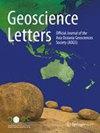2021 年印度尼西亚苏拉威西岛中臂级联地震揭示的巴兰塔克断层西延问题
IF 4.3
3区 地球科学
Q1 GEOSCIENCES, MULTIDISCIPLINARY
引用次数: 0
摘要
2021 年 7 月 26 日和 2021 年 8 月 26 日,苏拉威西岛中部臂区分别发生了两次震级分别为 6.2 级和 5.8 级的浅层地震。发生地震的断层之前只绘制了部分地图,因此进一步分析其特征对于评估地震危害至关重要。在本研究中,我们利用区域地震台网的数据,采用更新速度模型的双差分法重新定位相关地震,通过全波形反演确定病灶机制,并分析主震引起的静应力变化。我们重新定位的次中心和焦点机制解决方案揭示了两个地震群,一个位于巴兰塔克断层中部,在一条东南-西北走向的断裂上呈现正向滑动;另一个位于巴兰塔克断层西部,在一条东南-西北走向的断裂上呈现右旋走向滑动。6.2 级主震传递的额外静应力增加可能引发了随后的 5.8 级地震。要更全面地了解中苏拉威西地区的地震危害,就必须对以前未绘制地图的断层进行详细评估。本文章由计算机程序翻译,如有差异,请以英文原文为准。
The western extension of the Balantak Fault revealed by the 2021 earthquake cascade in the central arm of Sulawesi, Indonesia
Two shallow earthquakes of moment magnitude 6.2 and 5.8 occurred in the central arm of Sulawesi on 26 July 2021 and 26 August 2021, respectively. The fault responsible for the earthquake had previously only been partially mapped, thus making further analysis of its characteristics crucial for the assessment of seismic hazard. In this study, we exploit data from a regional seismic network, relocate the associated seismicity using the double difference method with an updated velocity model, determine focal mechanisms from full-waveform inversion, and analyze the static stress changes caused by the mainshock. Our relocated hypocenters and focal mechanism solutions reveal two earthquake clusters, one at the Central Balantak Fault that exhibits normal slip on a SE–NW trending rupture, and the other at the West Balantak Fault, which exhibits dextral strike-slip motion on a SE–NW trending rupture. The additional static stress increase transferred by the Mw 6.2 mainshock may have triggered the subsequent Mw 5.8 event. A detailed assessment of previously unmapped faults in Central Sulawesi is essential for a more comprehensive understanding of seismic hazard in the region.
求助全文
通过发布文献求助,成功后即可免费获取论文全文。
去求助
来源期刊

Geoscience Letters
Earth and Planetary Sciences-General Earth and Planetary Sciences
CiteScore
4.90
自引率
2.50%
发文量
42
审稿时长
25 weeks
期刊介绍:
Geoscience Letters is the official journal of the Asia Oceania Geosciences Society, and a fully open access journal published under the SpringerOpen brand. The journal publishes original, innovative and timely research letter articles and concise reviews on studies of the Earth and its environment, the planetary and space sciences. Contributions reflect the eight scientific sections of the AOGS: Atmospheric Sciences, Biogeosciences, Hydrological Sciences, Interdisciplinary Geosciences, Ocean Sciences, Planetary Sciences, Solar and Terrestrial Sciences, and Solid Earth Sciences. Geoscience Letters focuses on cutting-edge fundamental and applied research in the broad field of the geosciences, including the applications of geoscience research to societal problems. This journal is Open Access, providing rapid electronic publication of high-quality, peer-reviewed scientific contributions.
 求助内容:
求助内容: 应助结果提醒方式:
应助结果提醒方式:


